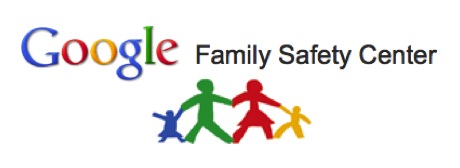We all love Skype. One of my best friends lives in Australia, and realistically, we’re not the world’s best “email-buddies”. But the combination of Skype and Facebook work really well for us when it comes to keeping in touch. A quick update here, a couple of picture comments there, the odd “like” and every couple of weeks a good old computer-face to computer-face Skype natter. So whilst logging in on Skype the other day to catch up with my suntanned friend, I was greeted with a lovely message from a “Vanda [insert random numbers here]” saying “Hey! I was flicking through the directory and I don’t know you, but I thought you looked like a good person to talk to, add me!” Despite the fact that I was hugely complimented that I “looked like a good person to talk to” and that adding Vanda would take my Skype friend total to nine (!), Vanda was promptly ignored.
If you’re on Skype, or if you’re part of the 500 million people on Facebook, then I’m sure you’ve experienced the same. Every so often, there’s a new “Friend” request in your box, you have the moment of “who could it be!” excitement and on opening it up, you haven’t got a clue.
Having grown up with slogans such as “Say NO to strangers” and “Stranger Danger”, it seems to make clear sense that should someone wish to befriend us that we don’t know, aka stranger, we reject their very kind offer. So why is it we have a generation today that may be happy to accept Vanda’s offers of friendship?
We need to understand our young people today are a generation who are not ‘adjusting’ to social-media like many others are, they are in fact the children of social-media. Where we have had to learn, they have been born into it. I know 2 year olds who can operate an iphone, and I’m sure you’ve seen the recent “I’m a PC” adverts featuring a four and half year old uploading pictures and another with an eight year old creating a photo-movie. Using social-media has become literal child’s-play.
And it’s not just computer access, mobile technology and networking is on the up. 28% of 18-24 years olds check Facebook on their mobile before they even get out of bed in the morning. Young people now have more access to the internet than ever before with the rise of the smartphone.
Facebook has a clear policy that under 18’s are given a recommended default security setting. However this setting allows everyone (yes everyone) to see their photos and posts, their biography and their family and relationship status. Bearing in mind all someone under the age of 13 (Facebook is for 13 years old and over) needs to do is to slightly amend their date of birth, it’s very easy for a young person’s world to be opened up to unknown eyes and online strangers.
At Young Scot, we’re passionate about new technology and new digital media; in fact we have a whole team dedicated to it. We understand communication is evolving and it’s so important to keep at the forefront of it. Social networking offers new engagement opportunities (anything that can get 500,000,000 users from every country, culture, religion and age group (over 13) in 6 years can’t be all bad) but at the same time, safety is paramount to this. While 70% of Facebook users are under 30, the message of “Say Ignore to Strangers” needs to be reiterated time and time again. Using the code created by the UK Council for Child Internet Safety, we have a clear “Zip It, Block It and Flag It” approach:
Zip It: think about what you say and post – don’t put up anything you wouldn’t show to your mum, dad or carer
Block It: Block any nasty posts or people you don’t know
Flag It: Flag up any problems or concerns immediately with a trusted adult or organisation
With so many great Internet Safety resources now available, access to advice and support has never been so easy. Isis Forensics have just released a free mobile application to help children and young people identify adults posing as children on chat rooms or social networking sites. Glow has a wealth of information, links and resource to encourage responsible use of the internet (check out our Young Scot group page here!) and organisations such as CEOP and Save the Children have hard-hitting awareness campaigns, resource and tools such as the CEOP ‘Report Abuse’ button on various social networking sites. However the message of privacy and “Say No” still needs to be reiterated on every level. Social Networking and media is there to enhance lives, open healthy doors of opportunity and communication and add to friendships and partnerships. In a word, it’s there to be enjoyed. All we ask is that it’s enjoyed safely, and this is the message that we need to keep in front of our Young People.
 Edinburgh – Thursday 22nd March 2012
Edinburgh – Thursday 22nd March 2012
